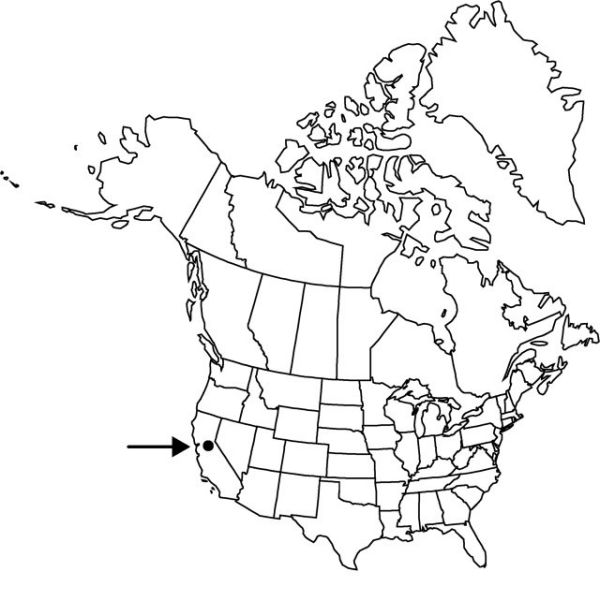Brodiaea pallida
Leafl. W. Bot. 2: 129. 1938.
Scape 10–20 cm, slender. Flowers 14–24 mm; perianth pale-purple or lilac, rotate, tube urceolate, slightly contricted above ovary, 9–11 mm, thin, opaque, not splitting in fruit, lobes ascending to strongly recurved, 9–11 mm; filaments 4–5 mm, base not triangular, with narrow abaxial wings, appendages absent; anthers ± obcordate, 2–3 mm, apex notched into wide V; staminodia erect, held close to stamens, white, broad, 8–11 mm, margins 1/2 involute at mid length, apex deeply notched; ovary 4–5 mm; style 8–11 mm; pedicel 5–30 cm. 2n = 12.
Phenology: Flowering spring (late May–early Jun).
Habitat: Foothill woodlands in open areas along intermittent streambeds, serpentine soils
Elevation: 300–400 m
Discussion
Of conservation concern.
Brodiaea pallida is endangered. It forms a single population 10–20 feet wide for approximately one-fourth of a mile along a stream near Chinese Camp, Tuolumne County. It putatively hybridizes with B. elegans and is threatened by cattle-grazing and development. It is in cultivation.
Selected References
None.
Lower Taxa
"broad" is not a number."narrower" is not a number."thicker" is not a number.
